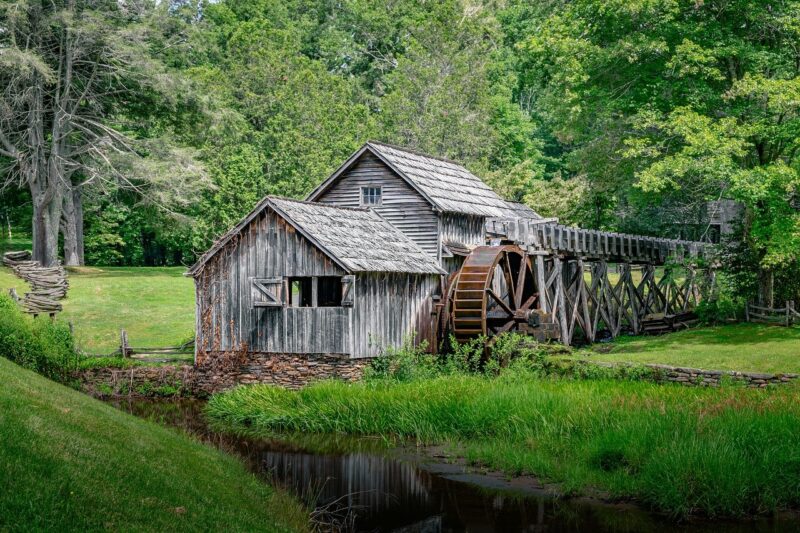How Water Has Inspired Architecture Throughout History
November 17, 2024

Water has been a vital element in the growth of civilizations throughout history. It has driven not only our survival and sustenance but has also significantly influenced our architectural designs. From ancient civilizations to modern masterpieces, water has inspired ingenuity and innovation in the field of architecture. This article explores the profound connection between water and architecture, showcasing how it has shaped our built environment globally.
1. The Role of Water in Ancient Civilizations
Water has historically held great significance for communities, particularly in the establishment of cities. Ancient civilizations such as the Egyptians along the Nile, the Mesopotamians by the Tigris and Euphrates rivers, and the inhabitants of the Indus Valley relied on nearby water sources.
**Key Architectural Contributions:**
– **Hanging Gardens of Babylon:** One of the Seven Wonders of the Ancient World, this lush garden integrated water features to create a stunning display of flora and greenery, symbolizing prosperity and innovation in irrigation techniques.
– **Aqueducts of Rome:** These remarkable structures were designed to transport water from distant sources into cities, enabling urban centers to flourish while showcasing intricate engineering capabilities and providing essential resources for daily life.
The reliance on water led to developments in hydraulic engineering, paving the way for some of the most iconic architectural structures in the world.
2. Water as a Source of Aesthetic Inspiration
Water’s beauty and tranquility have often inspired architects to incorporate it into their designs for aesthetic and spiritual connections. The fluidity and reflectiveness of water create an environment that promotes relaxation and peace.
**Architectural Examples:**
– **Fallingwater by Frank Lloyd Wright:** This architectural masterpiece is built over a waterfall, harmonizing with nature. The sound of the cascading water enhances the serene atmosphere and blurs the lines between the structure and the natural landscape.
– **The Sydney Opera House:** Nestled by the harbor, the design mimics the sails of boats, reflecting a harmony with the water. Its iconic presence complements the landscape and enhances the cultural experience for visitors and residents alike.
Water can transform structures completely, lending an ethereal quality that cannot be replicated by any other element.
3. The Use of Water in Urban Planning
Modern urban designers have begun to emphasize water management, integrating it into their blueprints to elevate quality of life and environmental sustainability. Parks, canals, and waterfronts serve as crucial aspects of contemporary city planning.
**Examples of Innovative Urban Planning:**
– **The Venice Canals:** The city of Venice is a prime example of utilizing water as a central feature in urban design. Canals replace roads, promoting both transport and tourism while showcasing the city’s unique architecture with historic buildings lining the waterways.
– **The High Line in New York City:** This elevated park incorporates several water elements, allowing visitors to experience nature amid urban settings. The integration of water features contributes to a healing environment and enhances biodiversity in the city.
By utilizing water in urban planning, cities can improve aesthetics, quality of life, and sustainability.
4. Sustainable Architecture and Water Management
As environmental awareness grows, architects are prioritizing sustainability in their designs. Water management is a paramount consideration for reducing urban heat, improving energy efficiency, and promoting biodiversity.
**Innovative Sustainable Practices:**
– **Green Roofs and Rain Gardens:** Integrating vegetation with water management helps absorb stormwater, promote biodiversity, and enhance urban cooling. Modern architecture increasingly employs these techniques for sustainable water use.
– **The Edge in Amsterdam:** This office building utilizes rainwater harvesting systems and water-efficient technologies, showcasing how innovative design principles can benefit both aesthetics and functionality while maintaining an environmentally friendly focus.
The shift towards sustainable architecture underscores the importance of water management in creating resilient, adaptive structures.
5. Case Studies of Water-Inspired Architectural Masterpieces
Some contemporary structures stand out for their innovative and enchanting use of water. These projects demonstrate how architects blend water with form to create memorable spaces.
– **Burj Khalifa, Dubai:** The world’s tallest building boasts a massive dancing fountain that captivates visitors. The water features are integrated into the choreography of light and music, enhancing the architectural spectacle.
– **Museo del Agua in Mexico City:** This museum educates visitors about the significance of water while showcasing its uses in architecture. The design implements sustainable water systems while celebrating the aesthetic and functional dimensions of water.
These case studies exemplify how architects can leave a lasting impression by integrating water into their designs.
Conclusion
Water has generally influenced architecture by inspiring innovative designs, sustainable practices, and urban planning. From ancient civilizations to modern masterpieces, the significance of water transcends time and geography, driving architectural evolution. As we continue to confront environmental challenges, the intersection between water and architecture will only become more vital in creating sustainable and resilient spaces that benefit both humanity and nature.
In the future, architects will need to focus on harnessing water’s potential to inspire while ensuring that the structures are sustainable, beautiful, and functional — creating environments where people can thrive alongside nature.








